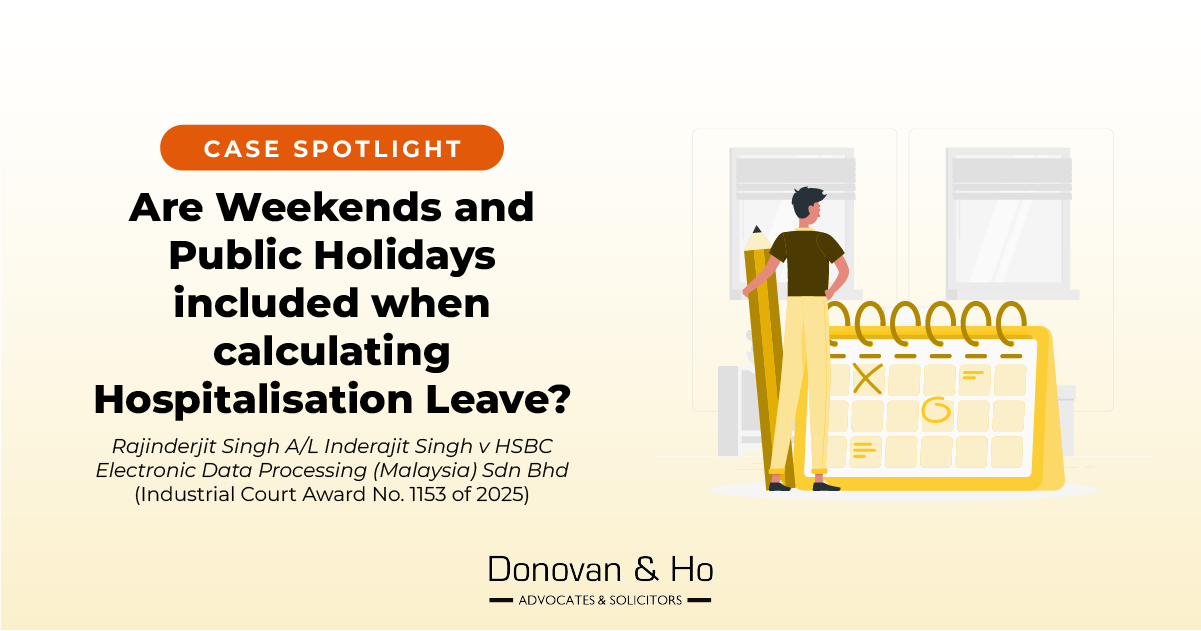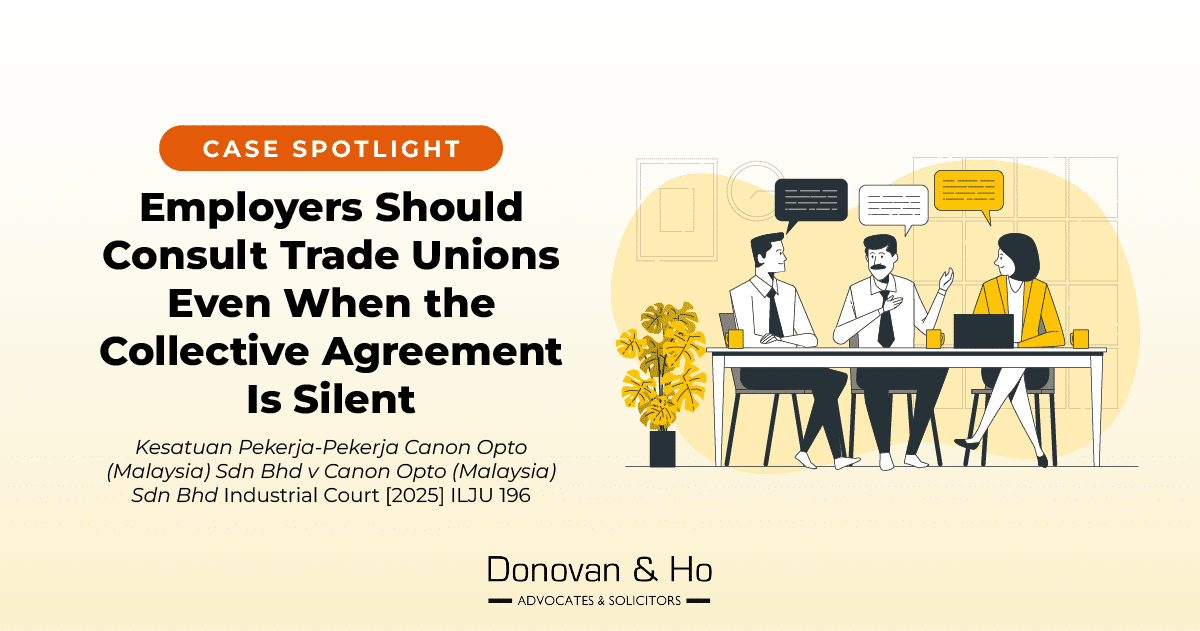Employees are entitled to sick leave and hospitalization leave under the Employment Act 1955 (“EA 1955”). However, the EA 1955 does not expressly state whether such leave should include rest days or public holidays when the period of illness or hospitalization spans continuously across those days.
This creates a practical question for HR teams. For example – if an employee is hospitalized for three weeks, should weekends or public holidays be excluded when calculating the total number of hospitalization leave days utilized?
The Industrial Court addressed this issue in Rajinderjit Singh A/L Inderajit Singh v HSBC Electronic Data Processing (Malaysia) Sdn Bhd (Award No.: 1153/2025).
Factual Background
- In 2021, the Claimant developed a medical condition known as vestibular neuronitis and was certified by a specialist to undergo two weeks of home bed rest. The Company treated the period as hospitalization leave.
- In 2022, the Claimant contracted COVID-19 and was placed on medical leave for 20 days. The Company included public holidays within that 20-day period when calculating his medical leave.
- Later in June 2022, the Claimant underwent heart surgery and was granted 22 days of hospitalization leave. Again, the Company included weekends and public holidays within that period.
- At that material time, he had taken a total of 72 days of sick and hospitalization leave, exceeding his entitlement by 12 days. The Company offset the 12 excess days against his unutilized annual leave balance of 19.5 days.
- The Claimant subsequently complained that the Company had wrongly deducted public holidays from his medical leave entitlement and had also deducted annual leave without his consent.
- The Company explained that the Claimant had exceeded his annual hospitalization leave entitlement of 60 days, and in line with its established practice, any excess hospitalization leave would be offset against his annual leave entitlement for the calendar year. The Company declined to adjust the Claimant’s hospitalisation leave entitlement despite the Claimant’s protest.
- The Claimant subsequently alleged constructive dismissal on the grounds that (1) the Company had incorrectly computed his hospitalization and sick leave entitlements, and (2) had unilaterally offset the excess hospitalization leave against his annual leave without his prior consent.
Court’s Findings
The Court found that the Claimant failed to establish a case of constructive dismissal.
It accepted that the Company’s practice of including weekends and public holidays when calculating hospitalization leave had been consistently applied to all employees, not just to the Claimant. The Court also observed that medical certificates typically specify a continuous period (for example, 1.6.2025 to 30.6.2025) without excluding weekends or public holidays.
Referring to section 60F(3) of the Employment Act 1955 (“EA 1955”), the Court noted that employees on monthly pay are deemed to have received their sick leave pay if they are paid their full monthly wages without deduction. The Court interpreted this as showing that the law contemplates sick and hospitalization leave as running on a continuous, calendar-day basis.
Further, the Company’s Employee Handbook expressly stated that hospitalization leave includes weekends and public holidays, and that this practice had been consistently applied, including in previous instances involving the Claimant. Therefore, including weekend and public holidays when calculating sick leave was implied into the contract of employment through the past practice.
On the issue of deducting annual leave to offset excess hospitalization leave, the Court observed that although the employment contract did not expressly provide for such deductions, the Claimant had not objected when the same approach was applied in prior years. Since the Company’s approach ensured that his full salary was paid, and the only effect was a reduction of annual leave days, the Court held that this did not amount to a fundamental breach that could justify a claim of constructive dismissal.
Key Takeaways
This decision confirms that hospitalization leave under the EA 1955 runs continuously and includes weekends and public holidays. Although this was not specifically addressed in the award, other parts of the EA 1955 may also be engaged – for example, s60D(1B) which states where a public holiday falls within the period during which an employee is on sick leave, the employer is required to grant another day as a paid holiday in substitution.
From a HR and policy drafting perspective, employers can relook at whether their existing employee handbooks or contracts define how sick leave and hospitalisation leave will be calculated. In this case, the fact that the methodology was referenced in the handbook and applied consistently in the past, was helpful for the employer.
***
This article was written by Leow Ho Eng (Associate) with assistance of Shoo Joedee from Donovan & Ho’s employment law practice.
Donovan & Ho is a law firm in Malaysia, and our employment practice group has built a reputation for providing strategic employment advice to local and global organisations. Our team of employment lawyers provide advice on employment law and industrial relations including review of employment contracts, policies and handbooks, advising on workforce reductions, and managing dismissals of employees for poor performance or misconduct. We also represent clients in unfair dismissal claims and employment-related litigation.
Have a question? Please contact us.






